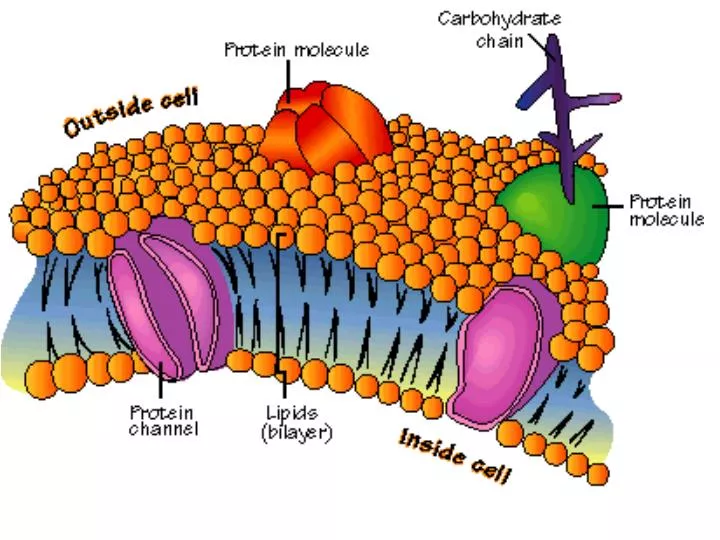

They carry signals from one segment of the membrane and relay it to another. Peripheral Proteins: These are found embedded in a single leaflet of the membrane.Integral Proteins: These proteins form channels to allow the movement of large molecules and ions across the hydrophobic layer of the membrane.The plasma membrane has three types of proteins:.Impermeable to large molecules and ions and prevent these substances from passing thorough.Permeable to small and non-polar molecules.They are fluid and components can move around freely.Phospholipids Have a hydrophobic head and fatty acid tail, form a bilayer separating the cell from the outside.Role of the components of Plasma Membrane Carbohydrates: Attached to proteins on outside membrane layers.Cholesterol: Between phospholipids and phospholipid bilayers.Proteins: Inner or outer and embedded within phospholipid layers.Phospholipid: The main fabric of plasma membrane.Cholesterol and proteins are embedded in the bilayer that gives the membrane a mosaic look.These components give a fluid character to the membranes.


Fluid mosaic model was proposed by S.J.In this article we will discuss about:- What is Fluid Mosaic Model?, Components of Plasma Membrane, Role of the components of Plasma Membrane and Functions of Plasma Membrane What is Fluid Mosaic Model of Plasma Membrane? Role of the components of Plasma Membrane.What is Fluid Mosaic Model of Plasma Membrane?.


 0 kommentar(er)
0 kommentar(er)
